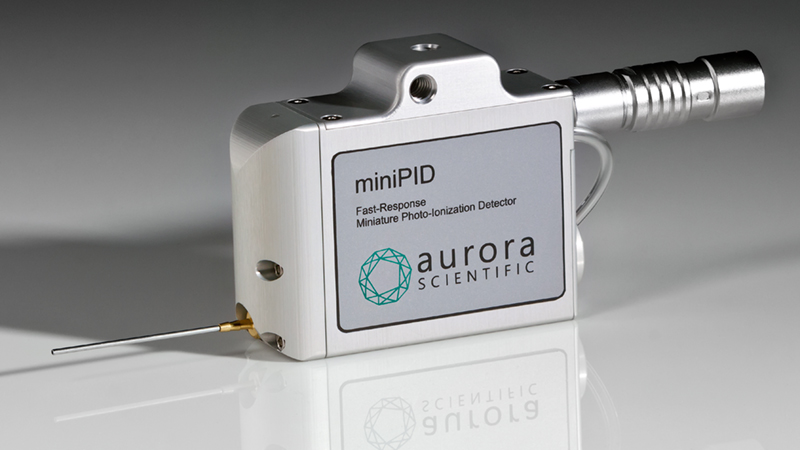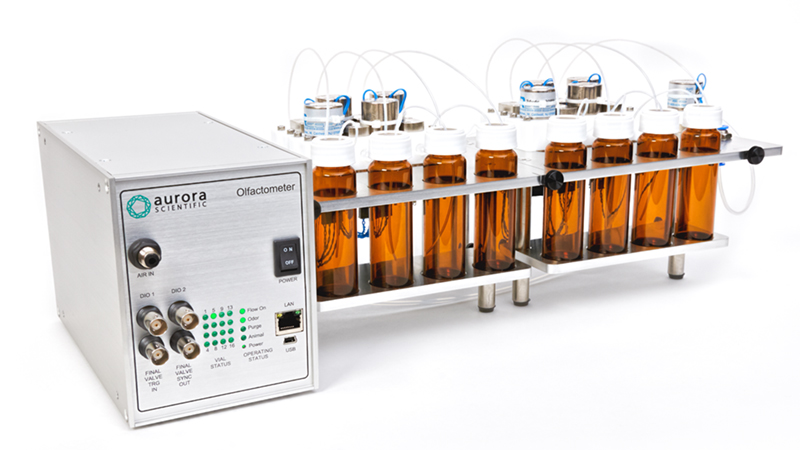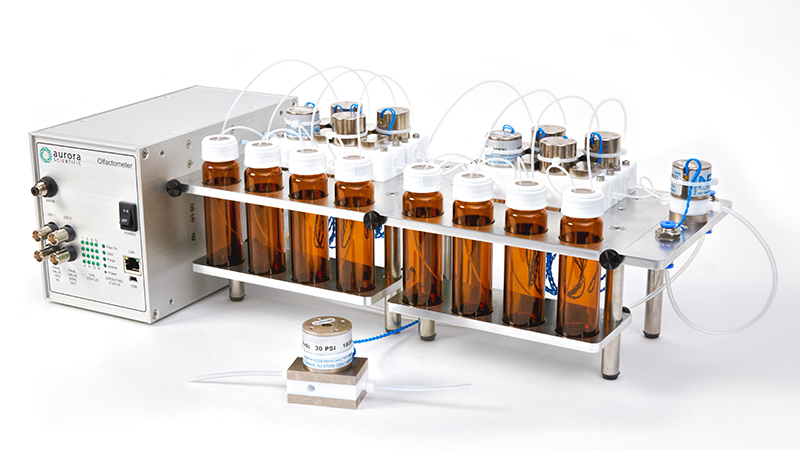Olfactory and Neuromodulatory Signals Reverse Visual Object Avoidance to Approach in Drosophila
Sensory plasticity in insects is mediated by behaviour-regulating biogenic amines. Some of these regulated behaviours include olfactory learning, aggression, and feeding. In Drosophila melanogaster, octopamine influences flight patterns and the response of motion-detecting neurons. This study analyzed both odor- and optogenetic-induced flight patterns using a flight simulator and odour delivery system. In addition to this, Aurora’s 200B miniPID sensor was used to at the beginning of each experiment to confirm air/odour at the location of the fly. In odourless air, it was found that the flies steered toward a vertical bar, which may mimic a plant stalk, but avoided a small box. It is thought that the small box may appear to be threatening but could also appear to be food. As such, they tested the animals’ response to each object in the presence of odours considered attractive to D. melanogaster. When Apple Cider Vinegar or ethanol odourant was added to the air, flies approached the small box that was previously avoided, and more strongly approached the vertical bar. However, in the presence of the odourant benzaldehyde, an odour that flies avoid, the flies displayed avoidance of the small object but continued to approach the vertical bar. These results suggest that visual valence reversal is produced by attractive odourants, but not aversive odourants. To elucidate how olfactory signals are coupled with behaviours, the authors tested whether aminergic neuromodulation was involved in odour-induced visual valence reversal. Transgenic flies expressing Chrimson, a red shifted excitatory channelrhodopsin, in aminergic neurons were subjected to stimulation by Chrimson-exciting illumination. Optogenetic depolarization of octopaminergic (OA) or tyraminergic (TA) neurons by the Tdc2-Gal4 driver changed the flight response to the small box from aversion to approach. Similar avoidance reversal was seen in 15/16 flies upon Tdc2 > Chrimson activation and in flies expressing Chrimson in T4 and T5 neurons. Taken together, this study provides insight into a model for multisensory processing in which attractive odors stimulate Tdc2 release, thus increasing response gain of the motion vision pathway.
Speed-Accuracy Tradeoff in Olfaction
Rinberg, Dmitry, Alex Koulakov, and Alan Gelperin developed a behavioral paradigm for mice in which both the duration of odorant sampling and the difficulty of the odor discrimination task were controlled. They observed that the accuracy of odor discrimination increases with the duration of imposed odorant sampling, and that the rate of this increase is slower for harder tasks.
Tips and Tricks for Troubleshooting the 200B miniPID
Here we will cover some of the more common issues that researchers encounter when using our miniPID Fast Response Olfaction
220A Olfactometer Software Control – Executing Odor Delivery
There are two main methods for executing odor delivery using the 220A olfactometer, one is using the sequencer to deliver
220A Olfactometer Software Control – Configuring Vials
With Aurora’s 220A olfactometer, precise delivery of individual odorants can easily be controlled using the Olfactometer Software program. Since
220A Olfactometer Software Control – Sequencer
When planning an olfaction experiment using Aurora Scientific’s 220A olfactometer, it is important to determine how odorants will be
It Just Makes Scents…Odor delivery with the 220A Olfactometer
The 220A Olfactometer by Aurora Scientific has been updated and during this tech cast, Chris takes viewers through live demonstrations while sharing tips, tricks and best practices for optimal ...
New and Improved in 2018
As another year draws to a close we are proud to look back on the accomplishments of our R&D




